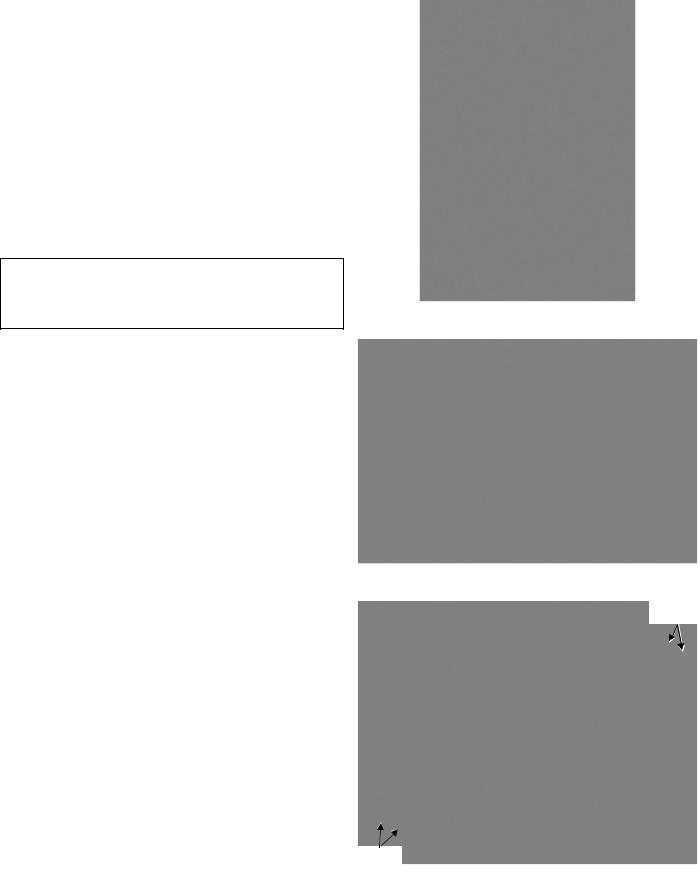GE Industrial Solutions MicroVersaTrip Plus User Manual

g
DEH–133B Installation Instructions
MicroVersaTrip Plus™ and
MicroVersaTrip PM™ Conversion Kits
for I-T-E® /ABB® Types K-3000, K-3000S, K- 4000,
and K-4000S Low-Voltage Power Circuit Breakers
INTRODUCTION
GE Conversion Kits are designed for upgrading existing I-T-E®/ABB® low-voltage power circuit breakers, rather than replacing the entire breaker. The Conversion Kits include MicroVersaTrip Plus™ or MicroVersaTrip PM™ Trip Units, the latest technological advance in GE trip systems.
MicroVersaTrip Plus and MicroVersaTrip PM Conversion Kits are designed and tested to conform to ANSI Standard C37.59, allowing the retrofitter to properly install the kit and acceptance test the breaker.
This publication covers installation of MicroVersaTrip Plus and MicroVersaTrip PM Conversion Kits on I-T-E/ABB Types K-3000, K-3000S, K- 4000, and K-4000S low-voltage power circuit breakers. Each Conversion Kit contains all the components needed to convert from the existing trip system.
TABLE OF CONTENTS |
|
SECTION 1. GENERAL INFORMATION ....................................................................................................... |
4 |
SECTION 2. BEFORE INSTALLATION.......................................................................................................... |
4 |
SECTION 3. BACK FRAME BREAKER CONVERSION |
|
Electromechanical Trip Device Removal (Types K-3000 and K-4000 only)................................... |
5 |
Installing New Phase Base Moldings (K-3000 and K-4000 only) ................................................... |
8 |
Solid State Trip Device Removal (K-3000S and K-4000S only) ................................................... |
10 |
Installing the Phase Sensors (All Models) ................................................................................... |
12 |
SECTION 4. FRONT FRAME CONVERSION |
|
Installing the Trip Paddle.............................................................................................................. |
13 |
Installing the Flux Shifter.............................................................................................................. |
14 |
Adjusting the Flux Shifter ............................................................................................................. |
16 |
Installing the Trip Unit Wiring Harness........................................................................................ |
17 |
Installing the Trip Unit Bracket ..................................................................................................... |
19 |
Installing the Wiring Harness ....................................................................................................... |
19 |
SECTION 5. INSTALLING THE TRIP UNIT................................................................................................ |
21 |
SECTION 6. FOUR-WIRE GROUND FAULT OPTION............................................................................. |
22 |
SECTION 7. TESTING AND TROUBLE-SHOOTING |
|
Testing ........................................................................................................................................... |
23 |
Trouble-Shooting .......................................................................................................................... |
23 |
Nuisance Tripping on Ground Fault-Equipped Breakers ................................................ |
23 |
2
LIST OF FIGURES |
|
|
1. |
I-T-E/ ABB breaker before conversion. .................................................................................................... |
5 |
2. |
Escutcheon removal................................................................................................................................. |
5 |
3. |
Arc chute removal.................................................................................................................................... |
5 |
4. |
Auxiliary switch mounting plate removal............................................................................................... |
6 |
5. |
Removing the phase barrier support rod................................................................................................ |
6 |
6. |
Loosening the locking bolt on the main contact closing arm jack shaft. .............................................. |
6 |
7. |
Removing the adjusting screw from the jack shaft clevis...................................................................... |
6 |
8. |
Removing the phase barriers. ................................................................................................................. |
7 |
9. |
Removing the draw-out primary contact fingers.................................................................................... |
7 |
10. |
Removing the pole assembly. ................................................................................................................. |
7 |
11. |
Removing the contact assembly mounting bolts. .................................................................................. |
8 |
12. |
Disassembled pole unit. .......................................................................................................................... |
8 |
13. |
Installing the contact mounting plate...................................................................................................... |
8 |
14. |
Converted pole assembly. ....................................................................................................................... |
8 |
15. |
Removing the existing trip paddle, as seen from the rear. .................................................................... |
9 |
16. |
X washer installed on a draw-out contact finger assembly ................................................................... |
9 |
17. |
Escutcheon removal............................................................................................................................... |
10 |
18. |
Arc chute removal.................................................................................................................................. |
10 |
19. |
Auxiliary switch mounting plate removal............................................................................................. |
10 |
20. |
Draw-out primary contact finger assembly removal............................................................................ |
11 |
21. |
Removing the shunt mounting bolts. ................................................................................................... |
11 |
22. |
K-3000S with CTs and shunts removed. ............................................................................................... |
11 |
23. |
Installing the CT spacers........................................................................................................................ |
12 |
24. |
Installing the phase sensors. ................................................................................................................. |
12 |
25. |
Installing the CT retaining plates........................................................................................................... |
12 |
26. |
Installing the trip paddle, as viewed from the rear of the breaker....................................................... |
13 |
27. |
Removing the bolt and nut from the right-pole closing arm assembly. ............................................. |
14 |
28. |
Reset stud installed on the right-pole closing arm............................................................................... |
14 |
29. |
Flux shifter mounting holes in the right side frame. ............................................................................ |
14 |
30. |
Flux shifter installed............................................................................................................................... |
15 |
31. |
Installation of the flux shifter reset arm. ............................................................................................... |
15 |
32. |
Attaching the X washer to secure the flux shifter reset arm................................................................ |
15 |
33. |
Adjusting the flux shifter, viewed from the top of the breaker............................................................ |
16 |
34. |
36-pin trip unit connector....................................................................................................................... |
17 |
35. |
36-pin connector adapter bracket. ......................................................................................................... |
17 |
36. |
Adapter bracket locking tabs. ................................................................................................................ |
17 |
37. |
Installing the push nuts onto the guide pins. ....................................................................................... |
18 |
38. |
Locking tabs on mounting plate............................................................................................................ |
18 |
39. |
Installing the trip unit bracket................................................................................................................ |
19 |
40. |
Flux shifter wiring harness leads........................................................................................................... |
19 |
41. |
CT wiring harness leads......................................................................................................................... |
19 |
42. |
Caution label to be applied to the breaker and compartment door. ................................................... |
20 |
43. |
Unused communications and neutral CT wiring tied off. .................................................................... |
20 |
44. |
Installing the trip unit on its mounting plate. ....................................................................................... |
21 |
45. |
Neutral sensor outline for I-T-E® K-3000, K-3000S, K-4000, and K-4000S breakers............................ |
22 |
46. |
Cabling diagram for MicroVersaTrip Plus™ and MicroVersaTrip PM™ trip units with |
|
|
ground fault on four-wire loads ............................................................................................................ |
25 |
3

SECTION 1. GENERAL INFORMATION
GE Conversion Kit installation is straightforward, but does require careful workmanship and attention to these instructions. Familiarity with the breaker is highly desirable. The general approach is to first remove the existing trip devices from the breaker, then install the MicroVersaTrip Plus or MicroVersaTrip PM kit components. Following this procedure, the converted breaker is performance tested before it is returned to service.
The majority of trip unit kit installations do not require any customized assembly work. However, some conversions may involve unusual mounting conditions or accessory combinations that require minor modifications and/or relocation of components. In most instances, this supplementary work can be done on site.
In preparation for the conversion, the installer should verify that the appropriate current sensors and trip unit have been furnished. Whenever a ground-fault trip element is installed on a breaker with a four-wire system, an associated neutral sensor (CT) is required for separate mounting in the equipment.
Ensure that retrofitted breakers are applied within their short-circuit ratings. For example, if the previous trip unit provided long-time instantaneous protection, the short-time rating of the MicroVersaTrip Plus or MicroVersaTrip PM Trip Unit will govern the application.
As a service-related consideration, the installation of a MicroVersaTrip Plus or MicroVersaTrip PM kit provides an excellent opportunity to perform normal maintenance on the breaker. Such procedures are described in the installation and maintenance manuals supplied with the breaker and equipment.
SECTION 2. BEFORE INSTALLATION
Before starting any work, turn off and lock out all power sources leading to the breaker, both primary and secondary. Remove the breaker to a clean, welllighted work area.
WARNING: Low-voltage power circuit breakers use high-speed, stored-energy spring operating mechanisms. The breakers and their enclosures contain interlocks and safety features intended to provide safe, proper operating sequences. For maximum personnel protection during installation, operation, and maintenance of these breakers, the following procedures must be followed. Failure to follow these procedures may result in personal injury or property damage.
•Only qualified persons, as defined in the National Electrical Code, who are familiar with the installation and maintenance of low-voltage power circuit breakers and switchgear assemblies, should perform any work on these breakers.
•Completely read and understand all instructions before attempting any breaker installation, operation, maintenance, or modification.
•Turn off and lock out the power source feeding the breaker before attempting any installation, maintenance, or modification. Follow all lockout and tag-out rules of the National Electrical Code and all other applicable codes.
•Do not work on a closed breaker or a breaker with the closing springs charged. Trip the breaker OPEN and be sure the stored-energy springs are discharged, thus removing the possibility that the breaker may trip open or the closing springs discharge and cause injury.
•Trip the breaker OPEN, then remove the breaker to a well-lighted work area before beginning work.
•Do not perform any maintenance that includes breaker charging, closing, tripping, or any other function that could cause significant movement of a draw-out breaker while it is on the draw-out extension rails.
•Do not leave the breaker in an intermediate position in the switchgear compartment. Always leave it in the connected, test, or disconnected position. Failure to do so could lead to improper positioning of the breaker and flashback.
WARNING: Before installing the conversion kit, turn the breaker OFF, disconnect it from all voltage sources, and discharge the closing springs.
4

SECTION 3. BACK FRAME BREAKER CONVERSION
The back frame conversion of an I-T-Eâ/ABBâ type K-3000, K-3000S, K-4000, or K-4000S circuit breaker, as shown in Figure 1, consists of the following steps:
1.Removing the existing electromechanical or solid state trip devices.
2.Installing new phase base moldings (K-3000 and K-4000 only).
3.Installation of the phase sensor (CT) assemblies.
Following are detailed descriptions of these steps. Be sure to remove the breaker to a clean, will-lighted work bench and place it in the upright position, so that the front and back are easily accessible.
Electromechanical Trip Device Removal (Types K-3000 and K-4000 only)
1.Remove the seven mounting screws securing the front escutcheon to the breaker, as shown in Figure 2, retaining all the hardware. Lift off the escutcheon.
2.Loosen the two retaining bolts securing the arc chutes, as shown in Figure 3. Lift out the arc chute assemblies from each pole.
Figure 1. I-T-E/ ABB breaker before conversion.
Figure 2. Escutcheon removal.
Figure 3. Arc chute removal.
5

3.Remove the nine mounting screws securing the auxiliary switch mounting plate to the breaker, as shown in Figure 4. Remove the mounting plate.
CAUTION: If the breaker contains auxiliary switches, the auxiliary switch mounting plate must be temporarily supported to the side in order to prevent accidental damage to the breaker’s integral wiring harness.
4.Remove the two retaining clips securing the phase barrier support rod, then slide the rod out through the side frame of the breaker, as shown in Figure 5. Retain the rod and clips.
5.Loosen the locking bolt on the jack shaft of the main contact closing arm, as shown in Figure 6. Remove the adjustment screw from the clevis, as shown in Figure 7.
Figure 4. Auxiliary switch mounting plate removal.
Figure 5. Removing the phase barrier support rod.
Figure 6. Loosening the locking bolt on the main contact closing arm jack shaft.
Figure 7. Removing the adjusting screw from the jack shaft clevis.
6

6.To remove the phase barriers on each phase, push the moving contact assembly and the adjustment screw toward the rear of the breaker, then pull the phase barrier up and to the front, as shown in Figure 8.
7.Remove the retaining clip from the center mounting post of each line and load draw-out primary contact finger assembly, as shown in Figure 9, then remove the fingers. Be sure to save the existing flat washer from each assembly for reuse, but discard the retaining clip.
8.Remove the four hex-head bolts securing the pole assembly to the breaker, as shown in Figure 10. Tilt the pole assembly forward and lift upward to remove it from the breaker. Be sure to save all hardware.
CAUTION: The pole assembly is heavy and awkward. Take care not to damage the assembly or the breaker’s common trip shaft while removing the pole assembly.
Figure 8. Removing the phase barriers.
Figure 9. Removing the draw-out primary contact fingers.
Insulating
Strips
Insulating
Strips
Figure 10. Removing the pole assembly.
7

9.The stationary and moving contact assemblies must be separated from the original molded base assembly. Remove the eight hex-head mounting bolts, as shown in Figure 11. Retain the four mounting bolts from the stationary contact assembly. Discard the four bolts for the moving contact assembly and the original base molding and electromechanical trip device. Figure 12 shows the disassembled pole unit.
10.If the existing insulating strips, shown in Figure 10, are made of fiber board, they must be replaced. Remove and discard the old insulating strips and replace with the new, slide-on insulators provided in the kit.
Installing New Phase Base Moldings (K- 3000 and K-4000 only)
1.Mount the stationary contact assembly to the new phase base molding provided using the hardware removed earlier, as shown in Figure 14.
2.Attach the contact mounting plate to the moving contact assembly with the two 5/16-18 x 3/4" flathead bolts provided, as shown in Figure 13. Prick the contact mounting plate on either side of each mounting bolt head with a center punch to lock the mounting bolts in place. Repeat this step for each phase of the breaker.
3.Install the moving contact assembly and mount-
ing plate on the phase base molding with the two 5/16-18 x 13/4" hex-head bolts, lock washers, and flat washers provided, as shown in Figure 14. Repeat this step for each phase of the breaker.
4.Attach the mounting plate to the phase base molding with the two 5/16-18 x 13/4" hex-head bolts, lock washers, flat washers, and hex nuts provided, as shown in Figure 14. Repeat this step for each phase of the breaker.
Figure 11. Removing the contact assembly mounting bolts.
Figure 12. Disassembled pole unit.
Figure 13. Installing the contact mounting plate.
Figure 14. Converted pole assembly.
8

5.Remove the two mounting screws securing the trip paddle for the right pole assembly to the common trip shaft, as shown in Figure 15. Discard the trip paddle and screws.
NOTE: Figure 15 shows the trip paddle from the rear, with the right pole assembly removed from the breaker.
WARNING: The mounting hardware used to reassemble the breaker’s pole assemblies must be correctly tightened for proper operation. Refer to the original manufacturer’s operating and maintenance manuals before performing the following step. Failure to properly tighten the mounting hardware may result in breaker failure, property damage, and/or personal injury.
6.Reassemble each pole assembly to the breaker by following steps 4 to 8 in Electromechanical Trip Device Removal above in reverse order. Use the X washer provided to reinstall the line-side draw-out primary contact fingers, as shown in Figure 16.
CAUTION: Seven X washers are supplied with the conversion kit. One of the X washers in smaller than the rest. Use the six larger washers for installing the draw-out primary contact fingers.
7.Adjust the breaker’s contact wipe and gap settings per the original manufacturer’s operating and maintenance manuals.
WARNING: In order to ensure proper operation of the breaker, it is crucial that the breaker’s contact wipe and gap settings be adjusted per the original manufacturer’s operating and maintenance manuals. Failure to properly adjust the contact assemblies will result in breaker failure, property damage, and/or personal injury.
8. Reattach the three arc chutes to the breaker.
Continue back frame conversion with installation of the phase sensors (CTs).
Figure 15. Removing the existing trip paddle, as seen from the rear.
Figure 16. X washer installed on a draw-out contact finger assembly.
9
